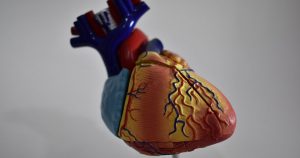New Study Shows Cardiovascular Diseases as Brazil’s Leading Cause of Mortality
According to data from the Ministry of Health, cardiovascular diseases are the leading cause of death in Brazil, accounting for approximately 30% of deaths each year. How can this disease be prevented? Professor Sérgio Timerman, who has a PhD in Cardiology from the University of São Paulo School of Medicine and is director of the Cardiac Arrest Center at the University of São Paulo School of Medicine, explains that cardiovascular diseases can affect a variety of people. “The biggest challenge we face is knowing how to diagnose people who seek emergency care. Patients usually arrive with chest pain. How can we identify whether or not this is the beginning of a heart attack? Approximately 25% to 30% of people who come to us may be suffering from a heart attack. There are risk groups that need to be monitored, such as people with a family history, those with high blood pressure, diabetes, obesity, and the elderly. There are several possibilities.”
Age of risk
The age of people affected by heart attacks is usually 40 or older. However, the professor states that younger and younger people are beginning to suffer from the disease. “For lifestyle reasons and also for a series of other reasons, this age has been decreasing significantly. Stressful routines, women in menopause, in short, the average age has been decreasing”, he comments.
The specialist also details ways to identify the symptoms more easily. “When you have pain similar to pressure, tightness or discomfort in your chest and this tightness or discomfort radiates to your shoulder, arm or neck, sometimes to your back, upper abdomen or jaw and is accompanied by fatigue or shortness of breath, it must be equivalent to angina. These are patients who you cannot waste time in seeking emergency care. But there are exceptions, who arrive with uncharacteristic chest pain and that could actually be the beginning of a heart attack; in this case, there is no way to be so sure. We could be talking about a gastrointestinal problem, it could be a lung problem, inflammation in the chest wall, ultimately it could even be a psychological problem.”
Time is life
Once the problem has been identified, it is necessary to act quickly. “Time is life. When we have a blockage in an artery, we need to act quickly to prevent the artery from closing and causing the death of the muscle it is supplying. Today, we have medications that can reverse this condition and unblock it immediately. If I have a very characteristic chest pain, I need to seek specialized emergency care and seek prompt care,” warns Timerman.
After the diagnosis and the situation has passed, it is necessary to change one’s lifestyle. “When you get to the point of having angina, this severe chest pain, we use the term secondary prevention, because there is no way to reverse the warning signs that we already have. So the person is a smoker, stressed, hypertensive, in short, this person is already being recommended to change their lifestyle. When you have a myocardial infarction, all these recommendations become much more important. Now you have already suffered severe damage to the heart, if there are no changes the situation can worsen to such an extent that it can lead to the patient’s death. So it is essential to adopt a much broader prevention system, and to treat intensively”, he concludes.

